
Blood and its components
Blood is a fluid composed by plasma, which is a yellow liquid that transports the second component of blood, the cells. Plasma is also made of water, salts and other molecules. There are three main blood cell types: the red blood cells, the white cells, or leukocytes, and the platelets. The red blood cells are the ones in charge of bringing oxygen from the lungs to the organs; they are small and very flexible, so they can be able to reach every corner of our body. The white cells are the ones that act as protecting soldiers for our immune system by killing anything that gets into our body and is potentially harmful. Platelets participate in the formation of blood clots, preventing with this excessive blood loss after we get injured.
- Important notification about information and brand names used in this slideshow!
- Photo courtesy of Egelberg by Wikimedia Commons : commons.wikimedia.org/wiki/File:DHM_image_of_human_red_blood_cells.jpg
- www.hematology.org/Patients/Basics/
- Dean L. Bethesda (MD): National Center for Biotechnology Information (US)
- 2005.
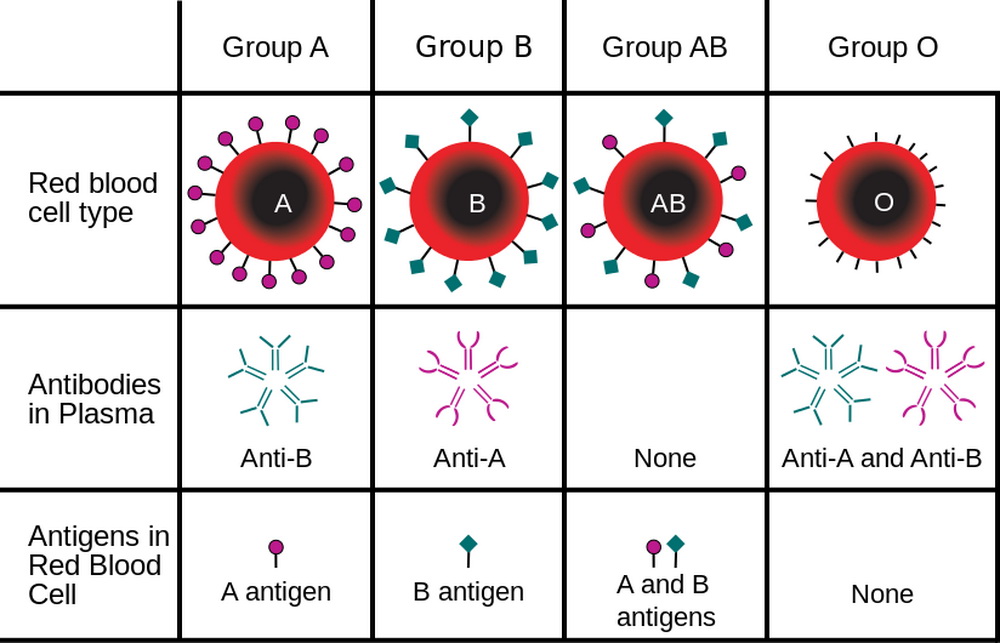
ABO Blood Type
It is very important for every one of us to now our blood type. It is vital information that can save our life or the life of others. Blood types refer mainly to certain molecules that are or are not present on the surface of red blood cells. The ABO blood type is named after two molecules, the A and B molecules, that can be identified on the surface of our red blood cells. If you are type A it means that your cells have the A molecule; if you are type B, it means they have the B molecule. You can have both and hence your blood type would be AB. What about the O type? Being typo O actually means that you don’t have any of these two molecules on your cells.
- Important notification about information and brand names used in this slideshow!
- Photo courtesy of InvictaHOG by Wikimedia Commons : commons.wikimedia.org/wiki/File:ABO_blood_type.svg
- www.ncbi.nlm.nih.gov/books/NBK2267/
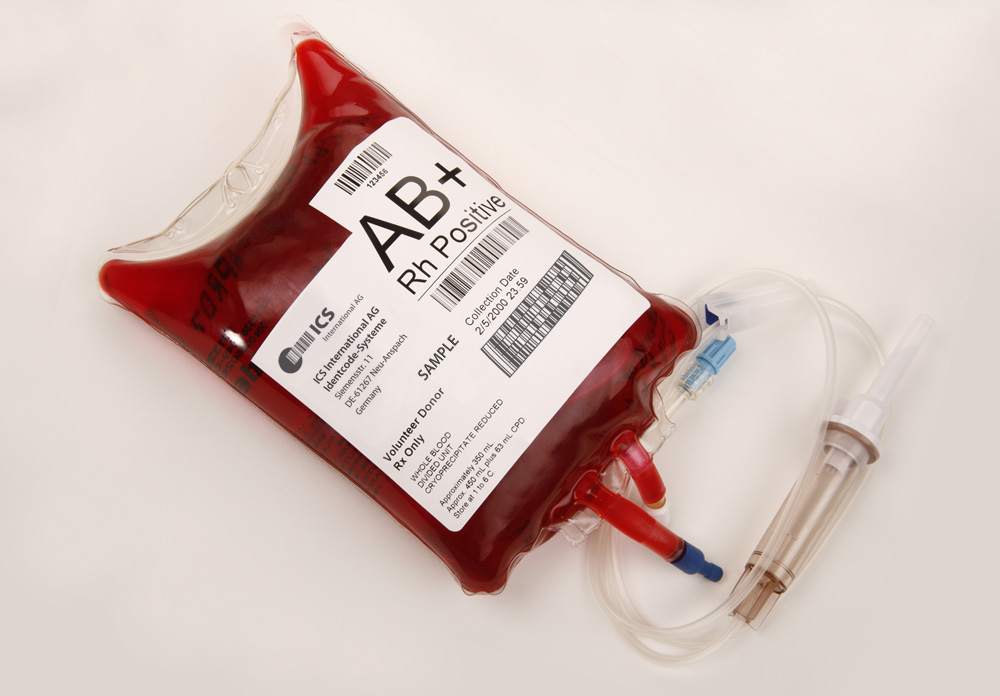
Rh Blood Antigen
The Rh antigen is a different molecule that is also on the surface of red blood cells, apart from the AB molecules. It is called Rh because it was first identified in a Rhesus monkey. In this case, either you have the Rh antigen or you don’t. So basically you are Rh positive or Rh negative. Putting both blood systems together you will make what we know as blood type. In my case, my blood type is O positive, which means I don’t have the A or B molecules on my red cells, but I do carry the Rh antigen. Which is your blood type? You can even determine your blood type and the one from your siblings by knowing your parents’ blood type, because these molecules are inherited.
- Important notification about information and brand names used in this slideshow!
- Photo courtesy of ICSident by Wikimedia Commons : commons.wikimedia.org/wiki/File:Ics-codablock-blood-bag_sample.jpg
- www.ncbi.nlm.nih.gov/books/NBK2264/#ch2.1.5
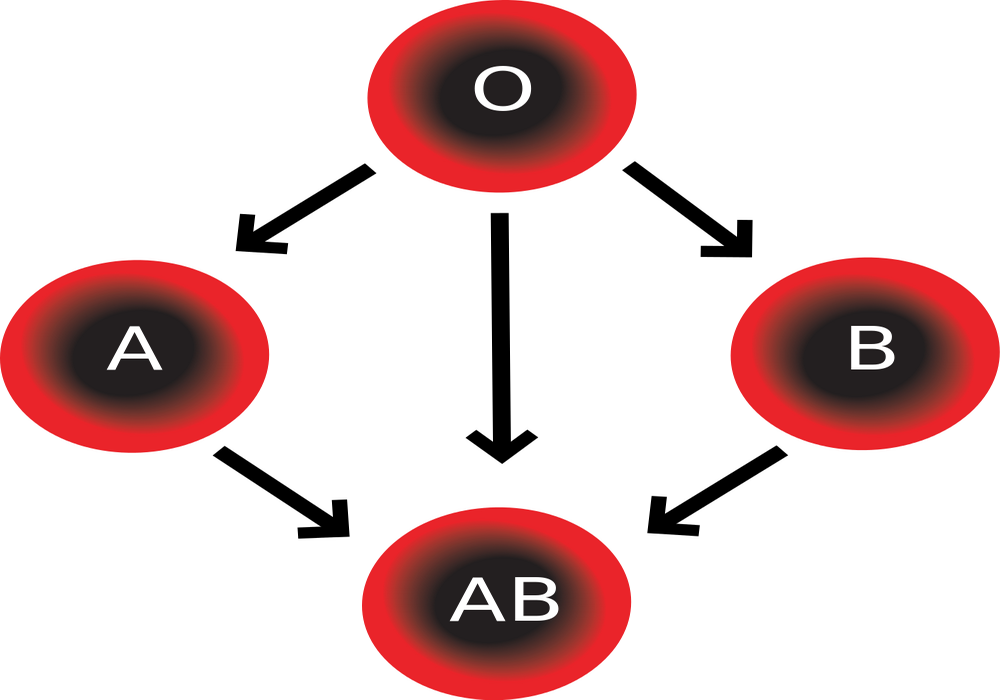
Donating or receiving blood: Compatibility
Compatibility means that someone can receive a certain blood type without having any rejection problems. Rejection is caused when our immune system recognizes something strange entering into our body and attacks it as a defense mechanism. When non-compatible blood is transfused, the answer from the transfused body can cause severe tissue damage and even death. To avoid this, compatibility tests have to be performed before a transfusion is made. The better thing to do is to transfuse the patient with blood of his or her same type. If this is not possible, there are certain rules to follow to know which type of blood the patient can receive. People with O negative blood type can donate to any other type, which is why it is known as the universal donor, but apart from this, all other blood types have compatibility restrictions.
- Important notification about information and brand names used in this slideshow!
- Photo courtesy of InvictaHOG by Wikimedia Commons : en.wikipedia.org/wiki/File:Blood_Compatibility.svg
- www.redcrossblood.org/learn-about-blood/blood-types
- http://mytransfusion.com.au/node/blood-groups-and-compatibility
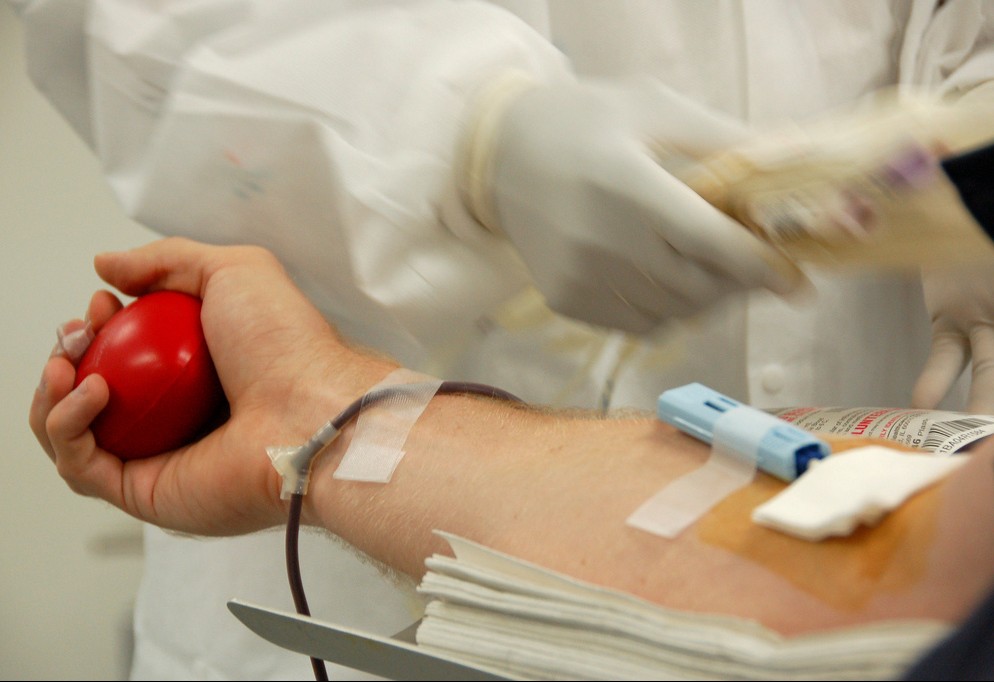
Red blood cells transfusion
One would think that when a blood transfusion is made, everything, including red blood cells, white cells, platelets and plasma, are transfused. However, it is possible to separate these components and make transfusions of only one or two of them, depending on the patient’s requirements. Blood red cells transfusions are mainly done to treat anaemia. Anaemia is a disease in which the patient doesn’t have enough red blood cells and therefore, don’t’ have the right amount of oxygen supplied to his or her organs. This condition can be caused by several factors, including excessive blood loss, undernourishment, some types of cancer, like leukemia, and other illnesses, such as malaria.
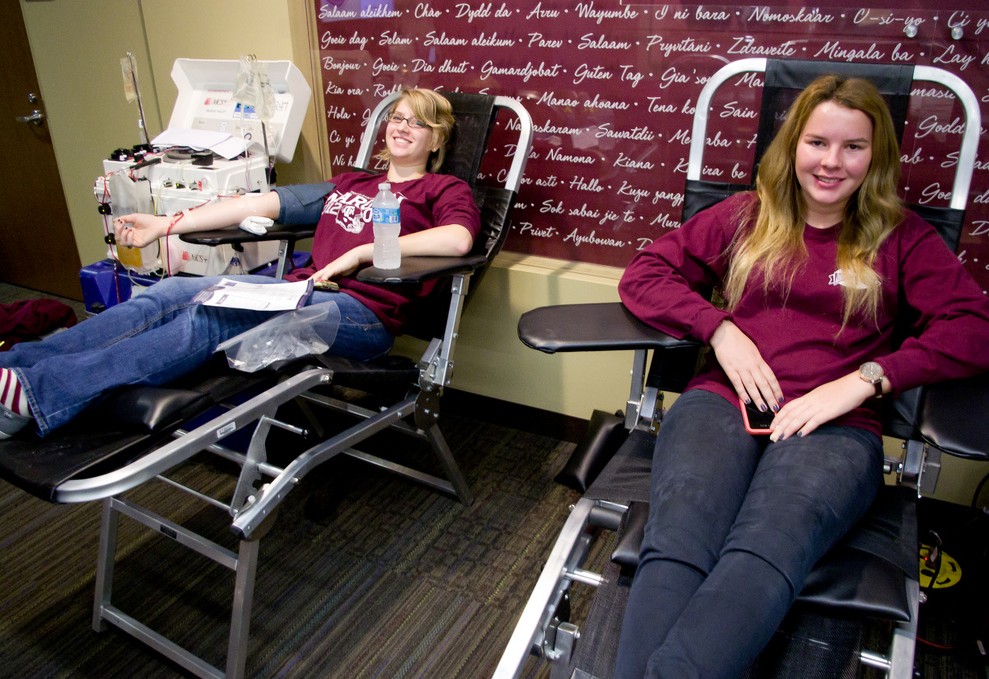
Platelets transfusion
Platelets can also be transfused. These small cells work together with other proteins in the blood to form blood clots. When a blood vessel is injured, platelets are transported to the “disaster zone” and clump together. In order to keep them this way, they promote the formation of fibrin, which acts like a glue and sticks platelets together and to the wall of the vessel. A reduction in the number of platelets can be caused by several disorders, including blood cancer and other blood diseases, anaemia, alcoholism and exposure to certain chemicals. A drop in the number of platelets, also known as thrombocytopenia, can be very serious and even life threatening, because it can cause intense external or internal hemorrhages.
- Important notification about information and brand names used in this slideshow!
- Photo courtesy of MSC Marketing by Flickr : www.flickr.com/photos/msc-tamu/8410746047/
- www.mayoclinic.org/diseases-conditions/thrombocytopenia/basics/causes/con-20027170
- http://www.macmillan.org.uk/Cancerinformation/Cancertreatment/Treatmenttypes/Supportivetherapies/Platelettransfusions.aspx
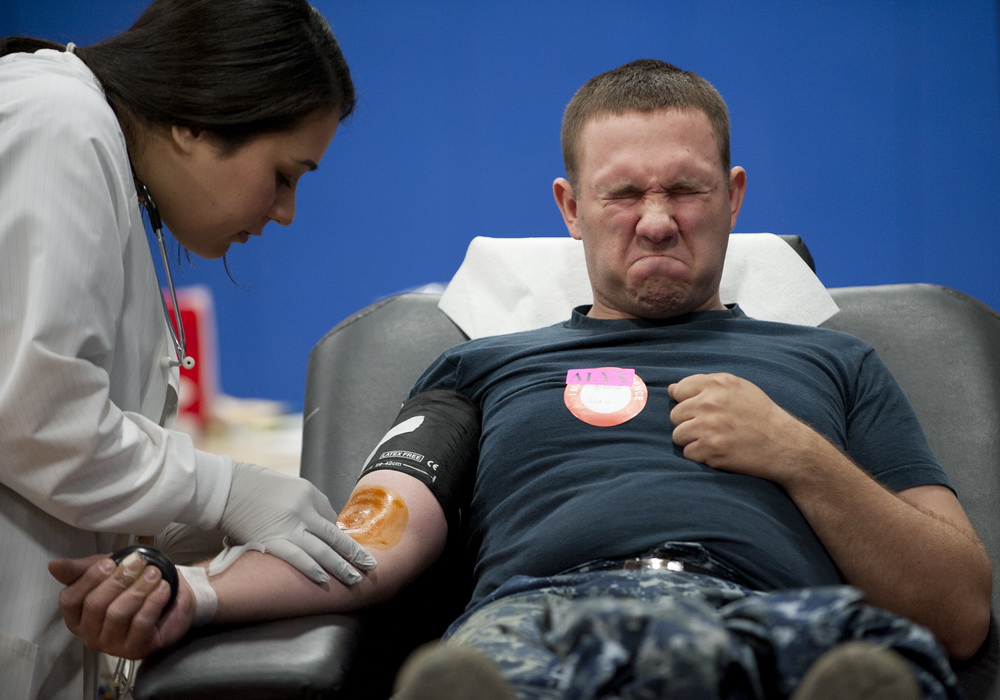
Is blood transfusion risky?
Nowadays, blood transfusions are standard medical procedures that are performed without any complication in almost every case. However, as any other medical procedure, blood transfusions can also have some risks. The risk of acquiring an infection was one of the main problems years ago; now, thanks to all the screening tests that blood banks perform on donated blood, this risk has been reduced substantially. The risk of allergy and rejection is more complicated to control. Allergic reactions can happen seconds after starting the transfusion or even days or weeks later. These reactions to the transfused blood are usually accompanied by fever, pain, dizziness and swelling. When the allergic reaction is more severe it is known as anaphylaxis.
- Important notification about information and brand names used in this slideshow!
- Photo courtesy of Official U.S. Navy Page by Fotopedia : www.fotopedia.com/items/flickr-8475450625
- www.nhs.uk/Conditions/blood-transfusion/Pages/risks.aspx
- http://www.cancer.org/treatment/treatmentsandsideeffects/treatmenttypes/bloodproductdonationandtransfusion/blood-product-donation-and-transfusion-possible-transfusion-risks?docSelected=blood-transfusion-and-donation-types-of-transfusions
- http://www.mayoclinic.org/tests-procedures/blood-transfusion/basics/risks/prc-20021256
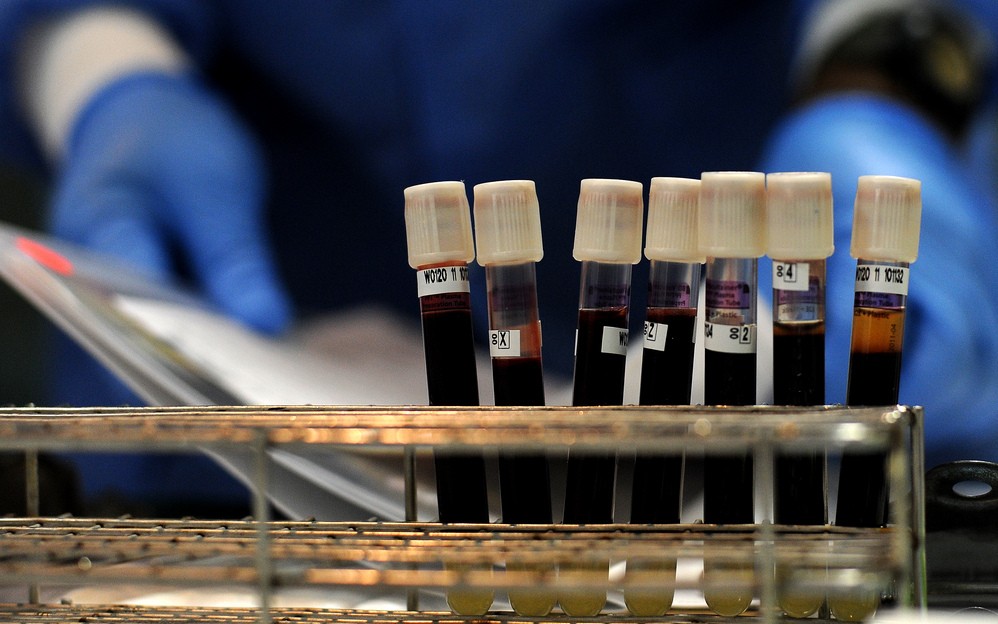
Rh incompatibility during pregnancy
There is one specific condition, known as Rh incompatibility, which occurs when the mom does not have the Rh antigen (Rh-negative) on her red blood cells, but the baby does. In the first pregnancy, generally during delivery, the blood from the mom gets in contact with the baby’s blood, making it possible for the mom to identify the baby’s Rh as something strange. After this contact, the mom’s cells start producing proteins that can later recognize the Rh antigen and attack it. These proteins, known as antibodies, stay in the mom’s blood from that moment on. When she gets pregnant for a second time, the anti-Rh-antibodies cross the placenta and start attacking the fetus Rh-positive red blood cells, causing a massive red blood cells destruction. Rh incompatibility can be prevented and treated if detected on time.
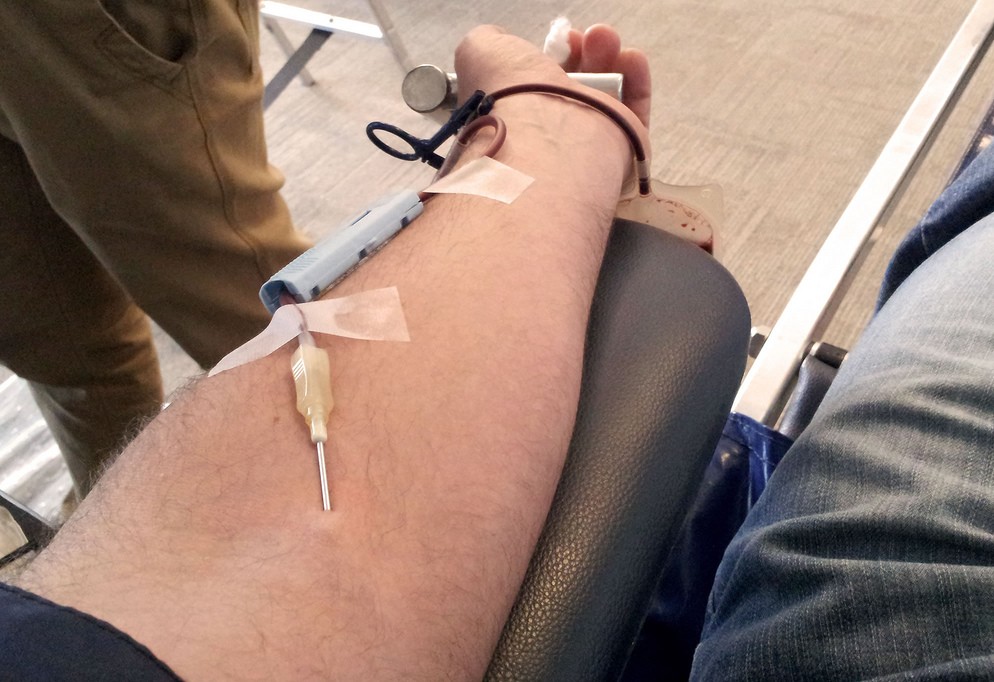
What to do if you want to donate blood
Blood donation campaigns are run throughout the year by many health organisms, such as The Red Cross. There are a few requirements you need to comply before donating: be 17 or older and weight at least 110 lb. When arriving to the blood bank, you will be asked to fill in a form, which gives you more information on blood donation. Then, a health professional will interview you and run a physical exam, to make sure you are healthy and suitable for donating. If you pass the exam, you will be taken to the donation room. The actual donation takes from 8-10 minutes and the blood is taken from an arm vein. After getting around 1 pint of blood, the process is over. Usually,you get a free snack and are advised to remain sited for 10 minutes and hydrate during the rest of the day, to replace the lost volume.
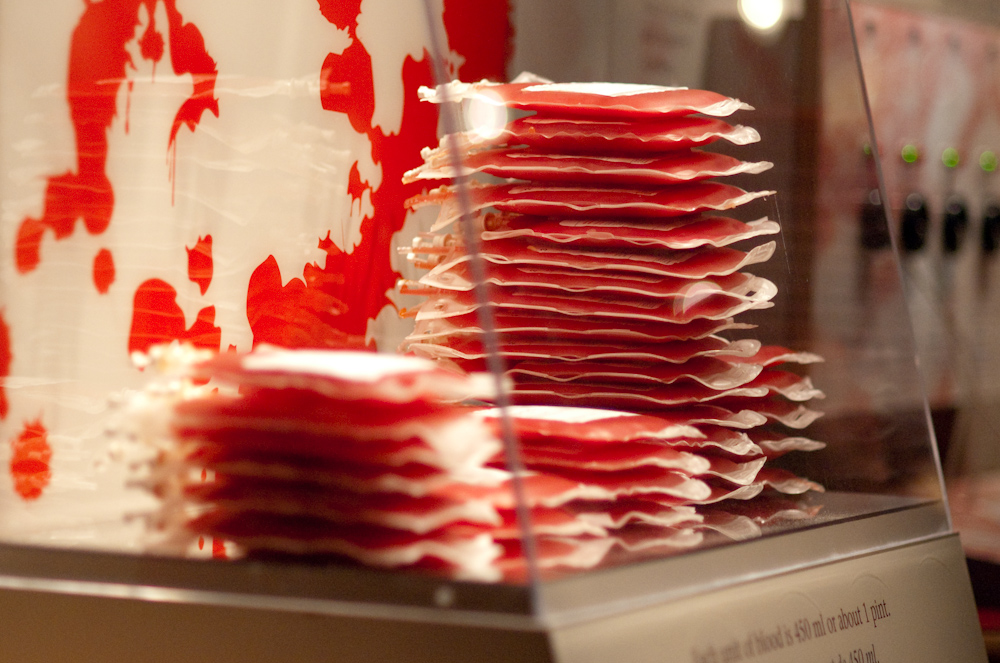
Blood testing after donation
What happens to your blood after you donate? Donated blood gets tested before it can be used for transfusion. These tests assure both doctors and patients, that the blood is safe to use. Blood is tested to determine the ABO and Rh groups, for compatibility reasons. Also, blood is tested for the presence of infections, including HIV, syphilis, hepatitis B, hepatitis C and human T-lymphotropic virus (HTLV). In some cases and depending on the clinical history of the donor, other tests are performed too, such as the tests to detect cytomegalovirus (CMV) and other tropical diseases, like malaria. If any donation is positive for either one of these tests, the blood is not used and the donor is informed about the results.
- Important notification about information and brand names used in this slideshow!
- Photo courtesy of Jason Hargrove by Flickr : www.flickr.com/photos/salty_soul/4165610216/
- www.blood.co.uk/resources/leaflets/tests-on-your-blood/
- http://www.donateblood.com.au/faq/the-donation-process/what-tests-do-the-blood-service-perform-on-donated-blood



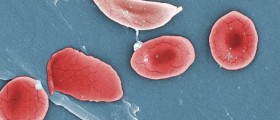
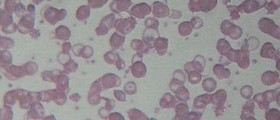
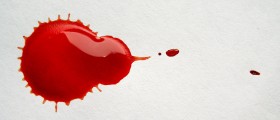


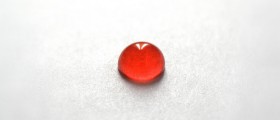

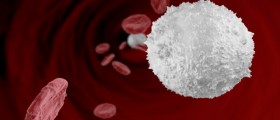









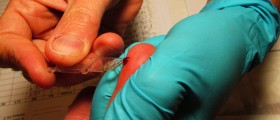
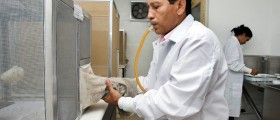



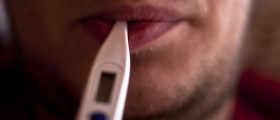
Your thoughts on this
Loading...